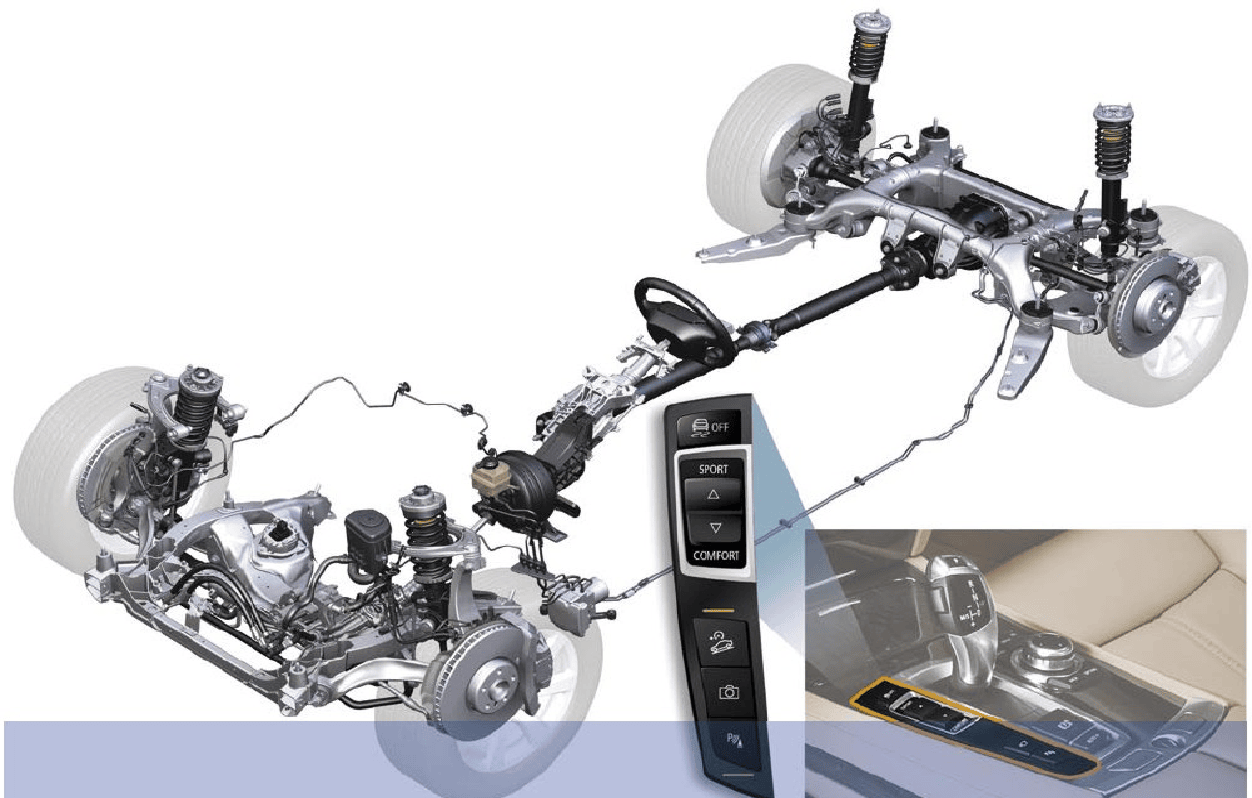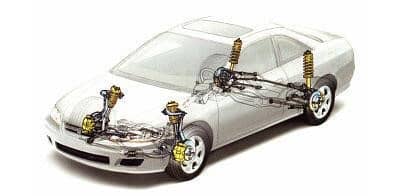In most of the engineering and automobile thinking, performance and safety are paramount, and every engineer would wish to achieve both. Horsepower, zero to 60 accelerations, as well as torque are what many would aim at achieving to make sure that an automobile is safe, efficient, and performing as per their expectations. However, what should be taken into account before all other factors and wishes is that even if the piston engine can produce superficial power, it would be useless if the automobile operator could not control it. Accidents would happen that may lead to fatalities. This is the reason why a simple and unnoticed system is one of the most crucial parts of an automobile, especially in motor vehicles. The suspension system is considered as one of the most important parts of a motor vehicle and has allowed for the achievement of safety and better performance in automobiles (Koch, 2011). Thus, it is under this background that the excerpt discusses the car suspension system with a major concentration of the adaptive vehicle suspension system.
The main purpose of the suspension system in a motor vehicle is to offer a safe and stable ride. The major parts of the adaptive suspension system in a vehicle are mainly passive, and they offer a good tradeoff amongst such elements as stability, comfort and wear. The diagram below illustrates a clear picture of the suspension system and its components in a motor vehicle.
Active suspension system in a Mercedes Benz

Sourced from Koch, (2011)

Not all roads have a smooth structure. It is worthwhile to note that many of the roads have potholes, inconsistencies, and bumps. Sometimes a car may move at an uncontrollable high speed, and as a coincident, bumps on the road or inconsistencies on the pathways may cause shocks that can result to an injury to the operator and the passengers. However, such shocks could be controlled with the help of the suspension system. The suspension system dampens down the shocks and can inhibit the jerks from transmitting the shocks to the machine operator or vehicle operator.
Nevertheless, the efficiency of the suspension system depends on numerous engineering elements. The selection of the springs determines the quality and the performance of the adaptive suspension system. The type of the springs selected, and their dampening features impact on the effectiveness of how the suspension could control the shock from the car tires (Huang et al., 2015). As such, a selection of the best and quality springs with better dampening features would reduce the intensity of the shock transmitted to the operator and passengers in the motor vehicle. The best suspension which possesses the desired qualities would allow the system to perform better and transmit the shock from the tires to the humans at a comfortable range. It is not possible to dampen the shock, but its impact on the vehicle occupants can be altered to minimize and alter its disastrous causes.
The major components of the suspension system involve the links that interconnect the wheel, steering hub, the brakes, and the car body also referred to as the sprung mass. However, with the interlinking between the adaptive suspension and the sprung mass, a car may overturn. For this reason, it would be necessary also to make sure that an adaptive system is put in place to manage the height at which the sprung mass would go as a consequence of shocks (Shafie et al., 2015). In such cases, antiroll bas is applied to overcome the exaggerated roll that may result from dumping in sharp corners. Different types of the adaptive suspension system are currently designed to control the shock and overturning of the motor vehicles.
Suspension system with the body of a motor vehicle

One major advantage of the active suspension is that they can prevent suspension travel under a varying load with little consumption of energy. This is the reason as to why it has been stable for leveling a car during accelerating, cornering as well as during abrupt braking (Koch, 2011). The design of the active suspension system is that at the moment of cornering the force per suspension strut differs from the static values and the length maintains its measurement, and hence eliminating body roll. The principle of a lever is applied in the design as a constant thrust can counterbalance the load through variations of the distance from the fulcrum. In that way, and with the application of the principle of a lever, the system would not roll or overturn, be it with the load or when empty.
The instruments such as the ABS and the EPS have been applied to avert the roll of a car. Nevertheless, with the new advanced technological innovations in the engineering and automobile industry, an active suspension system has been designed to reduce the roll of the car Koch, G., & (Kloiber, 2014). Thus, the active suspension system is one of the latest innovations that has allowed for the stability and effectiveness of the motor vehicles. Safety in motor vehicles, as well as in their performance, has been one of the most desired features.
In summary, therefore, the stability, comfort, and safety of a car are paramount. The active suspension system is the newest innovation that has allowed for the stability and efficiency of the motor vehicles. The suspension system could alter the force that is transmitted from the springs to the passengers and allows the force to reach the occupants of the car without any harm.
- HARRIS, W. (2018). How Car Suspensions Work. HowStuffWorks.
- Huang, Y., Na, J., Wu, X., Liu, X., & Guo, Y. (2015). Adaptive control of nonlinear uncertain active suspension systems with prescribed performance. ISA Transactions, 54, 145-155.
- Koch, G. (2011). Adaptive control of mechatronic vehicle suspension systems. Shaker.
- Koch, G., & Kloiber, T. (2014). Driving state adaptive control of an active vehicle suspension system. IEEE Transactions on Control Systems Technology, 22(1), 44-57.
- Shafie, A. A., Bello, M. M., & Khan, R. M. (2015). Active vehicle suspension control using electro hydraulic actuator on rough road terrain. Journal of Advanced Research, 9(1), 15-30.

